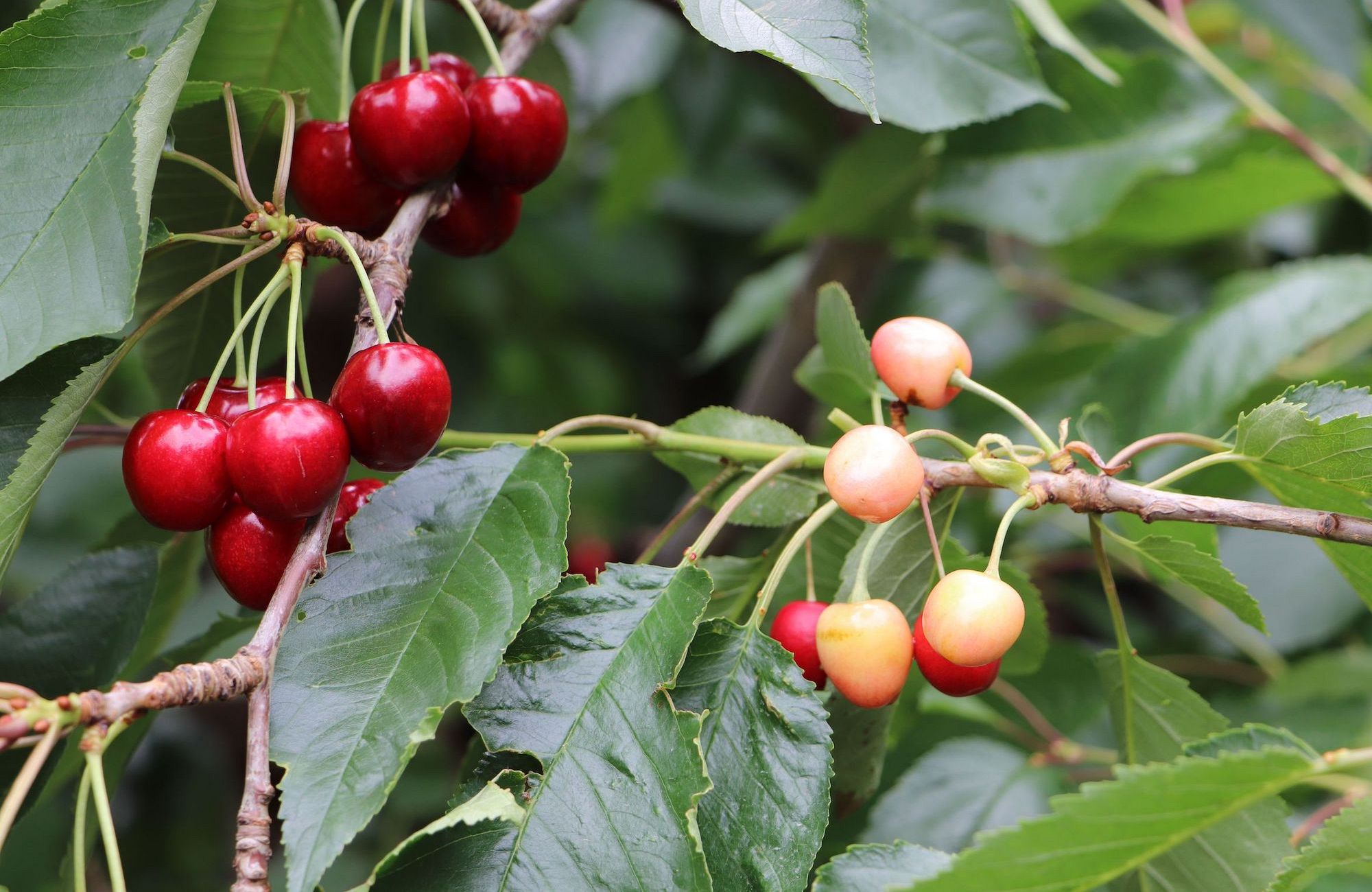How to use the guide
Each topic has it’s own page. Clicking on a topic button takes you to that page with more information. Navigation icons are at the bottom of each page. The hamburger icon will return you to the category table of contents page. The house icon takes you back to the main menu. The forward arrow will take you to the next category contents page.
Introduction
Little cherry virus 1 (LChV1), Little cherry virus 2 (LChV2) and X-disease phytoplasma cause small cherry symptoms often described as ‘Little Cherry’ or ‘X-disease.’ Diseased trees produce cherries of small size and poor color and flavor making the fruit unmarketable. X disease is at epidemic levels in the Columbia River basin, with high incidence in Yakima, Benton, and Franklin counties and in The Dalles, Oregon area.
Timely scouting and aggressive tree removal are essential to reduce the spread of the disease. Infected trees spread the pathogen to neighboring trees by insect vectors or via root-grafting from tree-to-tree. Infected trees can not be cured and MUST be removed entirely. This guide is designed to provide information on symptoms, scouting and sampling to encourage effective tree removal and management.
Creators & Editors
Authors: Tianna DuPont, WSU Extension; Scott Harper, WSU Plant Pathology; Bernadita Sallato, WSU Extension; Ashley Thompson, OSU Extension.
App creator: Cody Molnar, WSU Extension Assistant, edited by Tianna DuPont, WSU Extension
Acknowledgments
Photo credits: Banner Photo of Bing with X-disease phytoplasma by Tianna DuPont.
This project was funded in part by a grant from the Washington State Tree Fruit Research Commision and funding from the Washington Tree Fruit Endowment.
Additional Resources
For more information on Little Cherry Disease and X-disease, please visit the WSU Tree Fruit website at :
